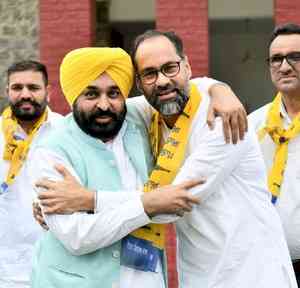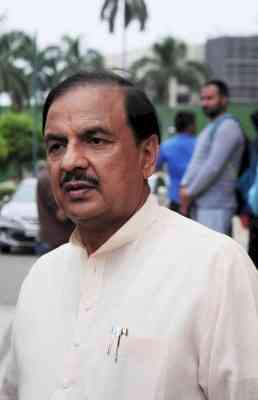Define clear roadmap for telecom spectrum, GSMA to government
New Delhi, June 27 (IANS) The London-based GSM Association (GSMA) - which has 800 operators across 220 countries as its members - has asked the new Indian government to recognise telecom as an infrastructure sector and define a clear roadmap...

New Delhi, June 27 (IANS) The London-based GSM Association (GSMA) - which has 800 operators across 220 countries as its members - has asked the new Indian government to recognise telecom as an infrastructure sector and define a clear roadmap of spectrum releases in the coming years in its upcoming roadmap for its first 100 days.
The GSMA has submitted the proposal, which also has two other recommendations, to Telecom Secretary M.F. Farooqui and is planning to meet Telecom Minister Ravi Shankar Prasad soon, GSMA India head Sandeep Karanwal told IANS.
The recommendations, a copy of which is available with IANS, lays emphasis on a clear roadmap for spectrum releases in the coming years. "Additional spectrum to mobile operators in the 2,100 MHz band is critical to ensure Indian citizens can fully enjoy the benefits of 3G mobile services.
"The release of the 700 Mhz band following the APT (Asia Pacific Telecommunity) band plan will also be important for the cost effective deployment of mobile broadband in India. There is a strong momentum on the allocation of this band to mobile operators in Asia and Latin America, paving the way for a nearly global harmonised device market and the first commercial devices are being made available," it stated.
Release of 700 Mhz will help in data growth in the country and in turn it will help in nationwide launch of fourth generation (4G) technology.
"We want to know the timeline when 700 MHz will be released; that will also help the manufacturers," Karanwal said.
The new telecom minister said in his 100-day agenda a clear schedule will be provided for auctioning different spectrum bands - 700 MHz, 800 MHz, 900 MHz and 1,800 MHz.
India now has around 900 million connections, both voice and data. They are expected to touch one billion in the next couple of years.
"We want treatment of uniform tower and fibre-laying guidelines enforced throughout the country; provision of essential utilities like grid power and availability of electricity on priority and favourable rates," Karanwal said.
"Availability and affordability of electricity are a major problem, which often leads to high running costs," Nitin Sapra, spectrum policy and regulatory affairs manager, GSMA India, told IANS.
Karanwal said a lot of time and effort is lost by service providers while obtaining various clearances to erect mobile phone towers, adding: "A single window clearance method will reduce all these problems."
The GSMA also sought for periodic review of electric and magnetic field (EMF) radiation standards for mobile towers in the country with reference to international safety standards.
"The restrictive standards in India on mobile stations are 10 times greater than what the World Health Organizations (WHO) recommended. This needs to be reviewed. These restrictions have been found to act as barriers to deployment of 4G technologies and to increase the cost of providing mobile services," Jack Rowley, GSMA's senior director for research and sustainability, told IANS.
He further said the health ministry should come out with a scientific-based study and recommend to the people what is good for them.
Finally, the GSMA has asked the government to rationalise taxes, duties and levies affecting the telecom sector to facilitate more rapid deployment of networks and services.
(Aparajita Gupta can be contacted at [email protected])

 cityairnews
cityairnews 













